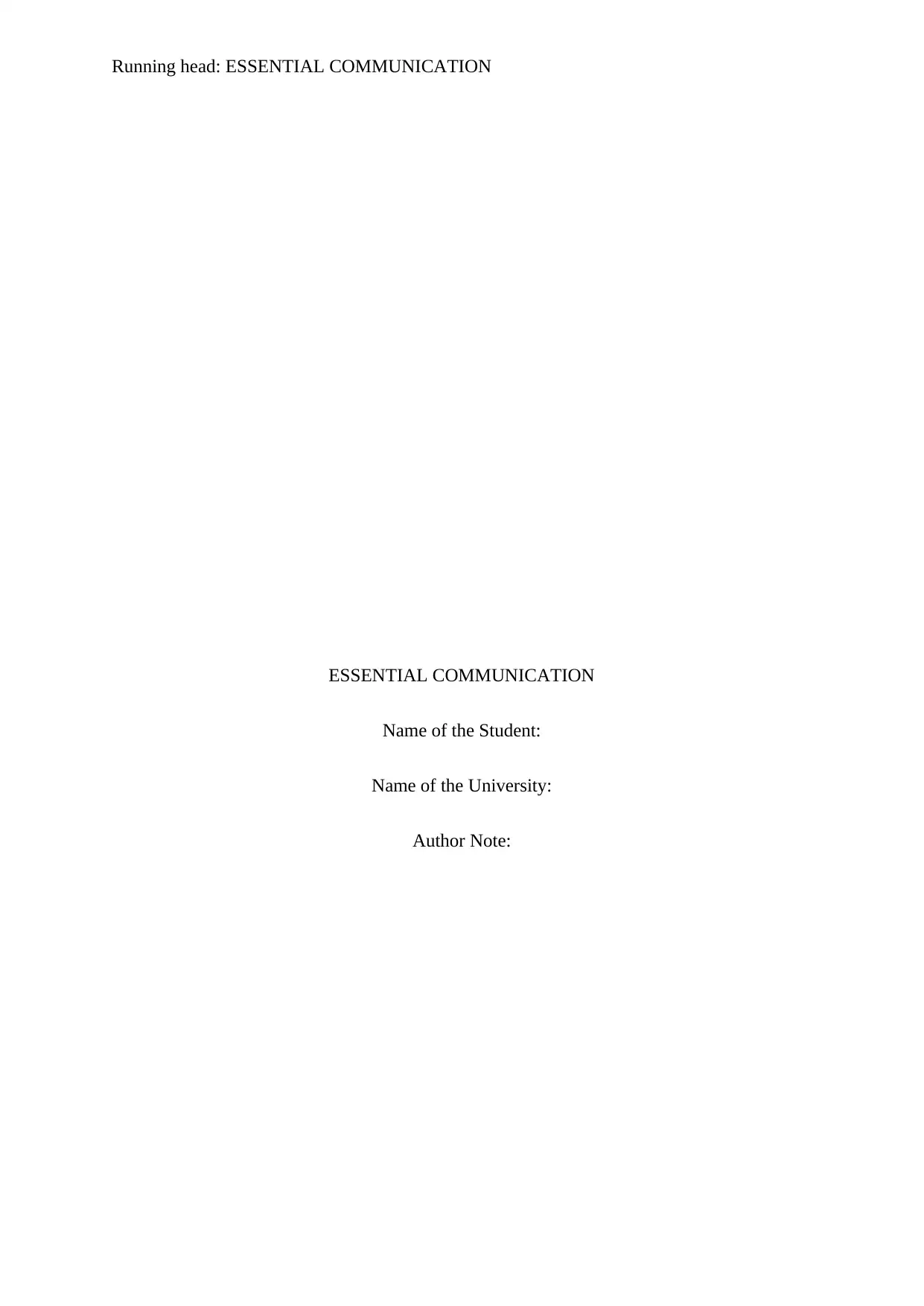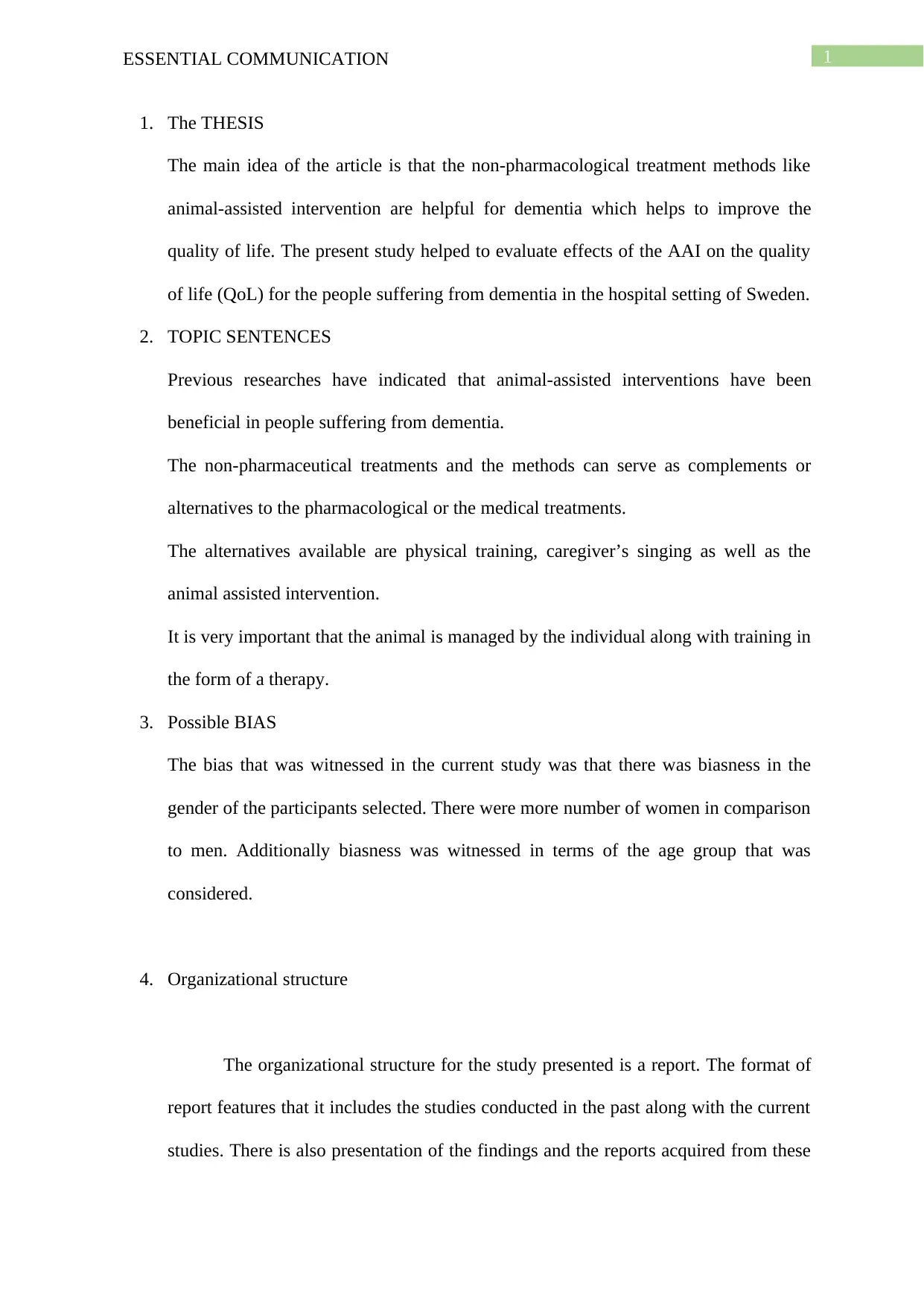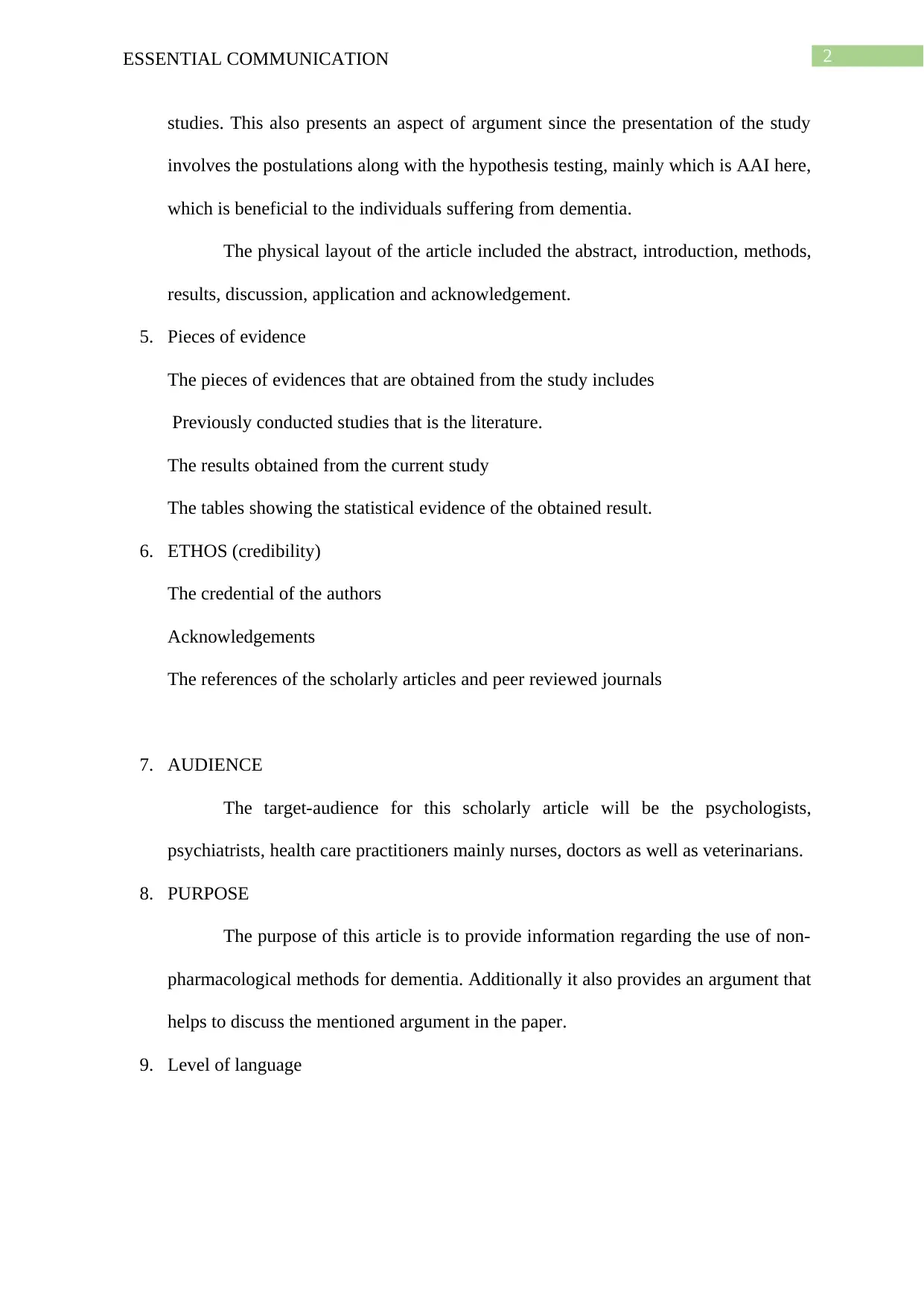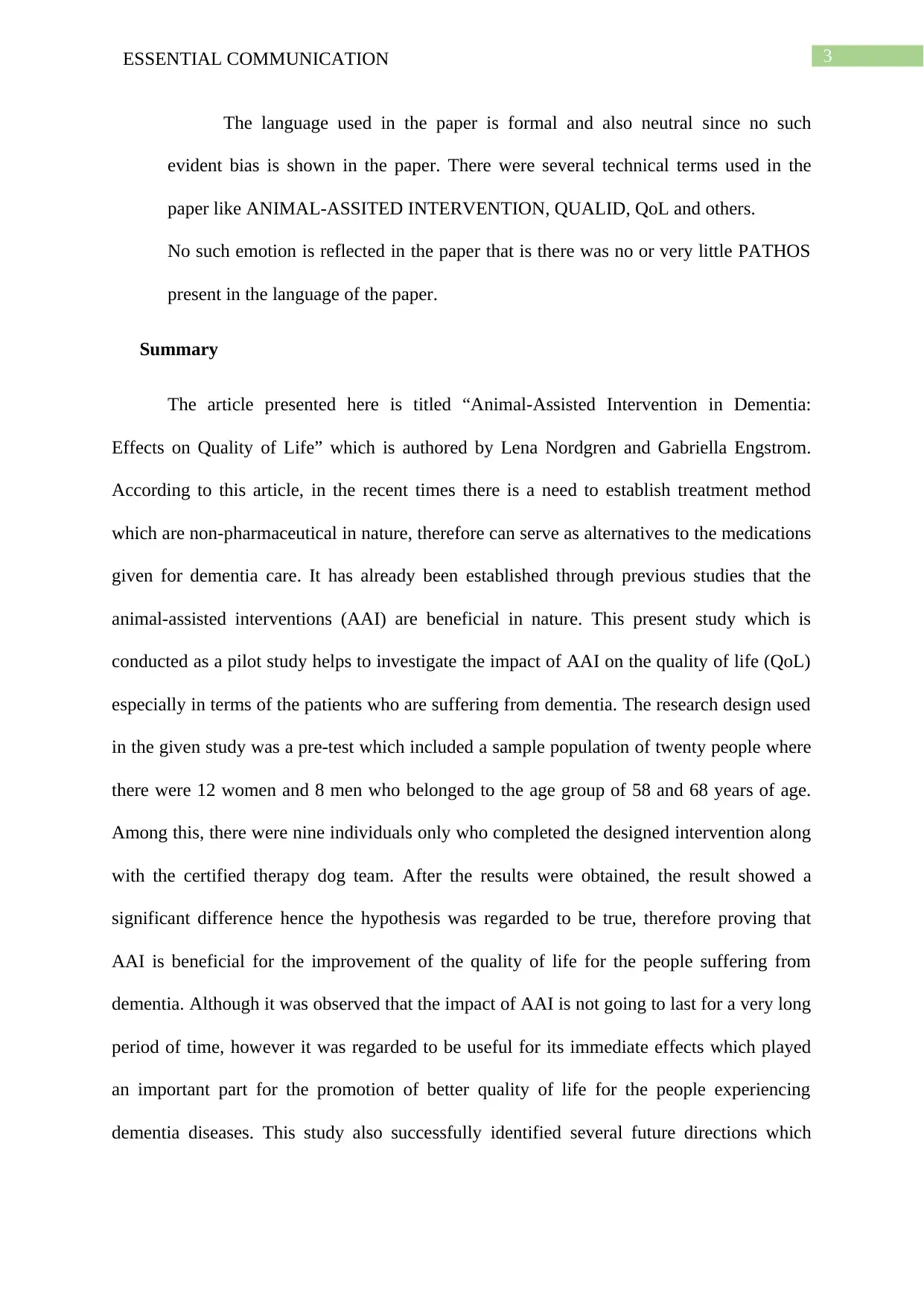Essential Communication: Evaluating Animal-Assisted Intervention (AAI)
VerifiedAdded on 2023/04/19
|6
|890
|218
Essay
AI Summary
This essay provides an analysis of the article "Animal-Assisted Intervention in Dementia: Effects on Quality of Life" by Lena Nordgren and Gabriella Engstrom. The analysis focuses on the article's thesis, topic sentences, potential biases, organizational structure, evidence, credibility (ethos), target audience, purpose, and level of language. The study investigates the impact of animal-assisted interventions (AAI) on the quality of life for dementia patients, noting that previous research supports AAI's benefits as a non-pharmaceutical treatment. The research design involved a pre-test with a sample population, revealing a significant improvement in the quality of life for patients who underwent AAI. While the long-term impact may be limited, the immediate effects are valuable for promoting a better quality of life for individuals with dementia. This analysis underscores the importance of AAI and identifies future research directions. Desklib provides access to similar solved assignments for students.
1 out of 6










![[object Object]](/_next/static/media/star-bottom.7253800d.svg)